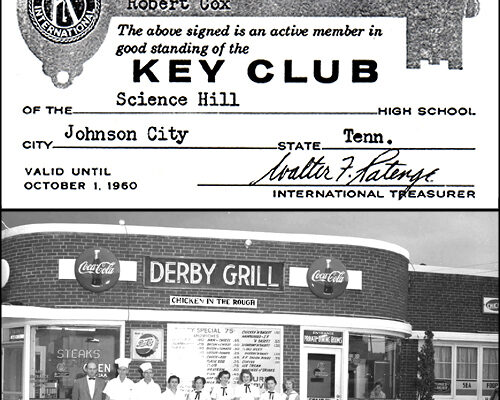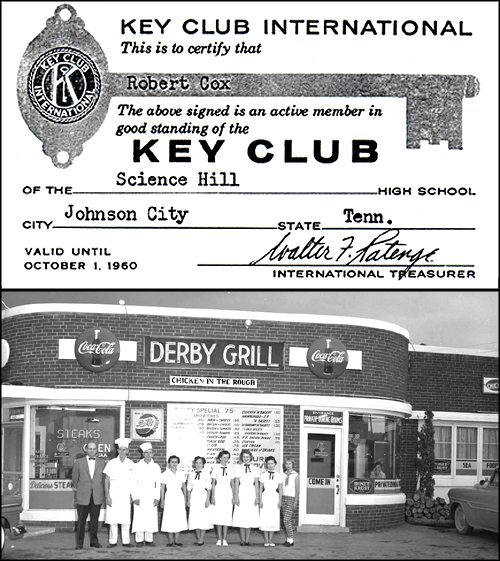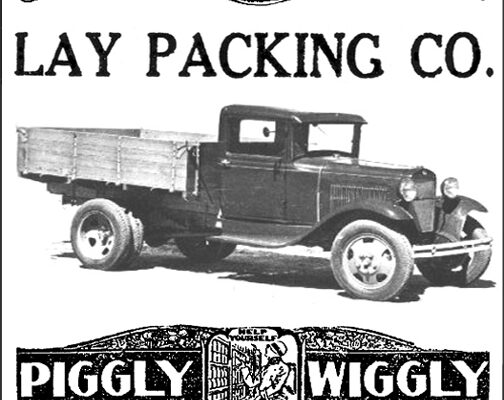Ben Scharfstein recently provided me with a précis of his family’s business that once operated in East Tennessee before eventually being acquired by another company.
Ben is a fan of the History/Heritage page that appears in the paper each Monday. “I am sending you a brief history of Stein-Way Clothing Company,” said Ben, “which was a major manufacturer during the 1950s and 60s.”
Ben explained that his dad, Phil, and his brothers, Irving, George and Moe, moved their Scranton, PA factory to Erwin in 1939. They manufactured men and boys’ trousers at the time. At the outbreak of World War II, their productions lines became devoted almost exclusively to the military effort.

After the conflict ended, the family decided to close their factory in Erwin and pursue other professions. Phil went into the real estate business and began building warehouses at 707-713 W. Walnut Street near the location of the present day Firehouse Restaurant. Things changed when the Korean War broke out in 1950. Impressively, the Defense Department asked Phil and his brothers to return to the business and start making trousers for the war effort again. They complied with the military’s request.
According to Ben: “Many of the first employees in the Johnson City Stein-Way Company came from the Erwin plant. Dad and his brothers never thought of their employees in the traditional sense but as valued members of one ‘big family.’ I remember Christmas parties at the National Guard Armory, handing out turkeys and hams to employees, Dutch treat lunches at the plant where everybody brought something to eat and share and sponsoring Stein-Way sports teams. When times were tough, Dad would take contracts at or below cost so that he minimized lay-offs for his ‘family.’ Several members of my mother’s relations worked and managed various departments of Stein-Way, including Joe Wood, W.W. and Bertha Gouge and Blake and Ben Gouge.”
Phil bought out his brothers’ portion of the business in the early 1960’s. By then, Stein-Way had increased its production base to include civilian and military trousers of varied types including jeans, military dress and combat fatigues. The elder Scharfstein passed away in 1965 resulting in the business baton being passed to Ben; his mother; and cousin, Blake Gouge, who continued to concentrate on fulfilling military needs during the Vietnam War. Amazingly, at the peak of the war, the company employed over 500 people and produced more than 6500 pairs of trousers for the military each day. Walnut Street became a congested roadway with a steady flow of tractor-trailers to and from the manufacturing plant.
“In the early 1970s,” said Ben, “we built a new 50,000 square-foot facility on a 10-acre tract on Rolling Hills Drive that Dad had purchased several years previously. After the Vietnam War ended, the Defense Department drastically reduced its contracts with us, causing us to secure jeans and trousers from name brand companies to stay busy. Unfortunately, many of these companies relocated overseas to reduce their costs and we decided that it was the right time to sell out to a larger company. Around 1973-74, we sold our business to Levi Strauss and Company. They produced quality jeans and apparel lines for many years at the Rolling Hills facility until they too moved overseas.”
Ben reflected on his family’s business: “I still think about those hardworking, loyal and very special people whom I was privileged to grow up and work with in the 1950s, 60s and 70s. Many of them are no longer with us, but they will always be part of the Stein-Way Clothing Company family.”





